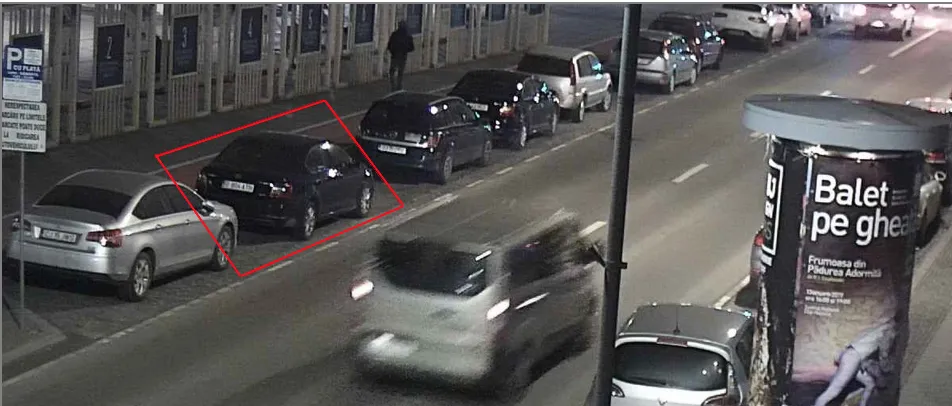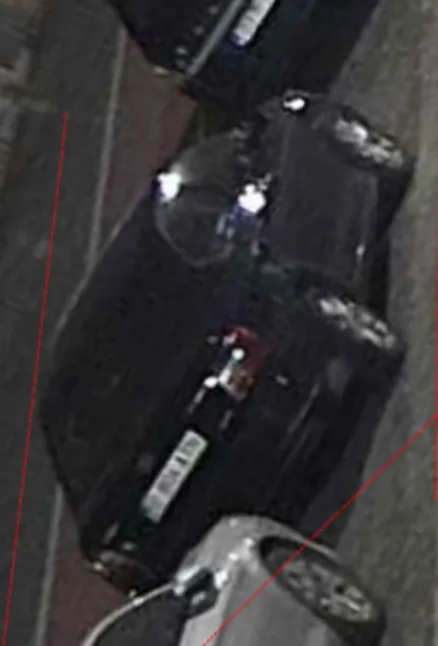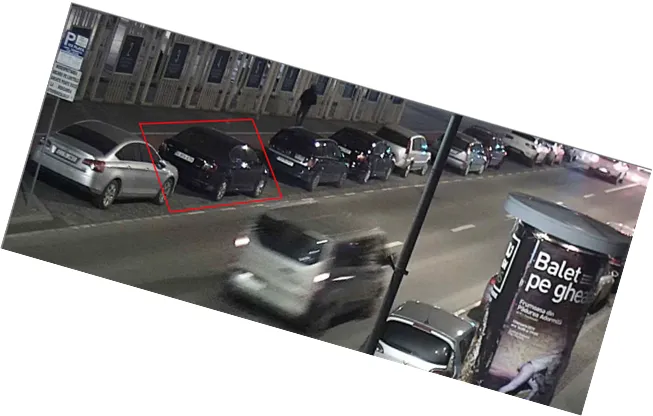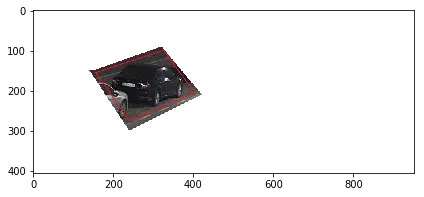使用Python中的Pillow库从图像中裁剪区域
3
- Dacian Mujdar
2
2请提供您认为的角落坐标。您希望结果是什么样子? - Mark Setchell
1你期望得到什么?带有矩形外部黑色像素的图像?还是经过校正的图像? - api55
3个回答
2
您可以在OpenCV中使用最小旋转矩形:
作为结果,您有矩形的中心坐标(x,y)、宽度、高度和旋转角度。您可以使用此矩形的角度旋转整个图像。您的图像现在将会被旋转:
可以在OpenCV中使用最小旋转矩形:
rect = cv2.minAreaRect(cnt)
box = cv2.boxPoints(rect)
box = np.int0(box)
作为结果,您有矩形的中心坐标(x,y)、宽度、高度和旋转角度。您可以使用此矩形的角度旋转整个图像。您的图像现在将会被旋转:
您可以计算出四个矩形顶点的新坐标(您已经得到了角度)。然后,只需为这些点计算正常的矩形(正常的矩形=不是最小的,没有任何旋转)。使用此矩形,您可以裁剪旋转后的图像。如果我理解正确,裁剪后的图像将是您想要的样子,如下所示:
因此,您只需要使用OpenCV即可。也许有一些库可以更轻松地完成此操作。
- Piotr Kurowski
2
这里有一个基于scikit-image(而不是Pillow)的解决方案,您可能会发现它很有用。
您可以将要裁剪的区域的顶点传递给函数
您可以将要裁剪的区域的顶点传递给函数
skimage.draw.polygon,然后使用检索到的像素坐标来遮罩原始图像(例如通过alpha通道)。最初的回答。import numpy as np
from skimage import io, draw
img = io.imread('https://istack.dev59.com/x5Ym4.webp')
vertices = np.asarray([[150, 140],
[300, 240],
[210, 420],
[90, 320],
[150, 150]])
rows, cols = draw.polygon(vertices[:, 0], vertices[:, 1])
crop = img.copy()
crop[:, :, -1] = 0
crop[rows, cols, -1] = 255
io.imshow(crop)
- Tonechas
0
我将基于opencv的解决方案(sub_image)改编为适用于PIL。它接受一个(center, size, theta)矩形,我从cv2.minAreaRect获取它,但也可以通过数学方法从点构造。
我看到过一些其他的解决方案,但它们留下了一些奇怪的伪影。
def crop_tilted_rect(image, rect):
""" crop rect out of image, handing rotation
rect in this case is a tuple of ((center_x, center_y), (width, height), theta),
which I get from opencv's cv2.minAreaRect(contour)
"""
# Get center, size, and angle from rect
center, size, theta = rect
width, height = [int(d) for d in size]
if 45 < theta <= 90:
theta = theta - 90
width, height = height, width
theta *= math.pi / 180 # convert to rad
v_x = (math.cos(theta), math.sin(theta))
v_y = (-math.sin(theta), math.cos(theta))
s_x = center[0] - v_x[0] * (width / 2) - v_y[0] * (height / 2)
s_y = center[1] - v_x[1] * (width / 2) - v_y[1] * (height / 2)
mapping = np.array([v_x[0],v_y[0], s_x, v_x[1],v_y[1], s_y])
return image.transform((width, height), Image.AFFINE, data=mapping, resample=0, fill=1, fillcolor=(255,255,255))
- micimize
网页内容由stack overflow 提供, 点击上面的可以查看英文原文,
原文链接
原文链接




